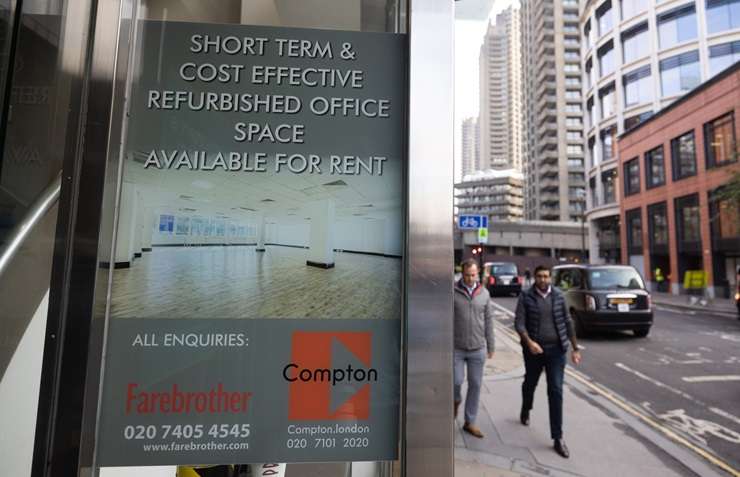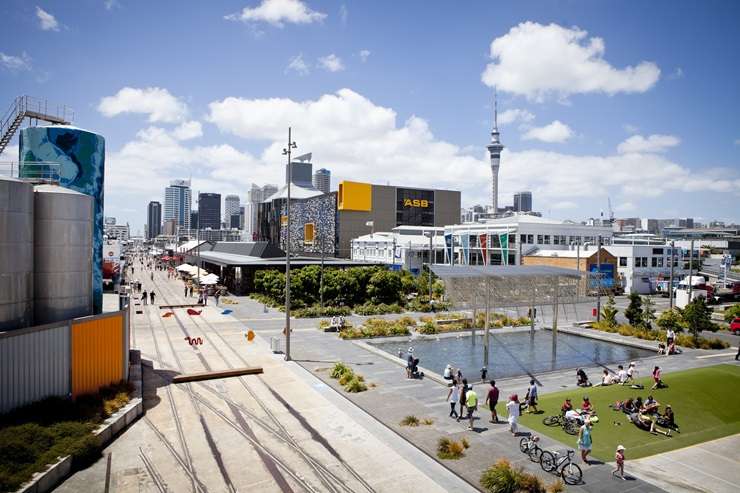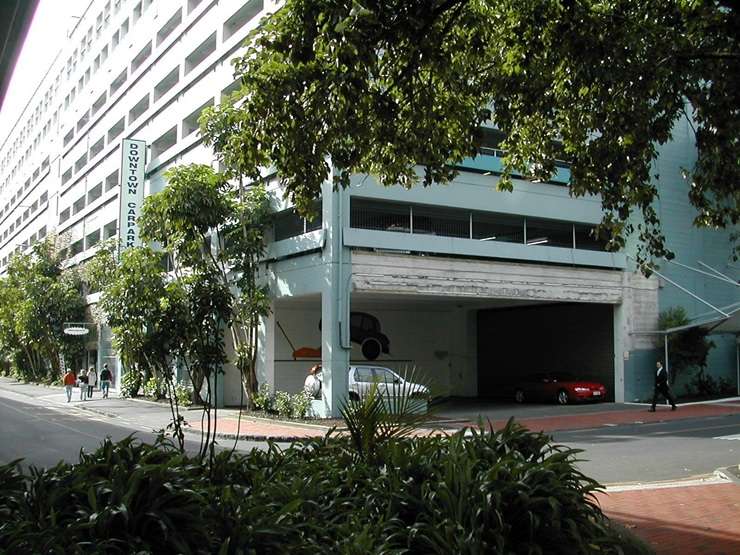Staff globally have been encouraged back to the office this year as bosses find the work-from-home model not as enticing as once thought.
Workplace patterns changed after lockdowns post-Covid with workers forced to adapt to working from home, some of whom were not eager to give up the benefits of no commute time and more work/life balance.
Overseas the WFH, Work-From-Home, acronym has given way to RTO, Return-to-Office, with some companies taking a strong stand in getting staff back to the office.
American news site CNBC.com reported some of the companies which first “sang the praises” of remote work, “like Google, Meta, Amazon and even Zoom, have cracked down on office attendance, in some cases tying it to performance evaluations”.
Start your property search
The UK, dubbed the working-from-home capital of Europe, is facing a similar struggle to get workers back, according to the Daily Mail, reporting a study as showing UK employees spend an average 1.5 days a week “logged in from the study, the dining table or the patio”, compared to an international average of 0.9 days.
Read more:
- NZ’s top 60 real estate agents: Meet the super-listers
- 2023's biggest house sales revealed - ‘Buyers have money and options’
- Ex-Planet Hollywood building that once hosted Robin Williams is for sale
“The French spend 0.6 days logged on remotely, meaning a Londoner is nearly three times as likely to be toiling from the settee with tea and toast than a Parisian is to be working with a coffee and croissant on the chaise lounge.”
A Guardian UK report from October said two-thirds of bosses believe workers will return to the office five days a week within the next three years, “while a majority of company leaders think pay and promotions could become linked to workplace attendance, according to a survey”.
Industry leaders in New Zealand said bosses here are using more of a carrot approach than stick, although they signal some stick could be ahead if necessary.
Chris Farhi, Bayleys head of insights, said this year’s trend had been companies wanting higher grade office space and that is linked to getting staff back to the office.
As leases expire, Farhi said good quality offices were becoming hard to find in a lot of markets, whereas lower quality office buildings were finding it harder to get tenants.
“One of the interesting undertones we’ve seen this year is if you talk to a lot of corporate real estate people, businesses in general are trying to encourage more people back to the office.

Bayleys head of insights Chris Farhi: "Businesses in general are trying to encourage more people back to the office." Photo / Fiona Goodall
“That’s definitely a theme for this year and I guess you’re seeing that overseas as well with a lot of big companies changing tack from work-from-home policies to now mandating staff back to the office for at least a certain period of time.”
In New Zealand, the carrot approach has seen a number of businesses upgrade their office location, including moves to Wynyard Quarter on Auckland’s waterfront which is near amenities and transport.
According to Bayleys data, the overall vacancy rate in the Auckland CBD was 11% at the last estimate but in the Wynyard Quarter, with its typically modern buildings, the rate was 6.5%, compared to midtown, with typically older buildings, where the rate was 21.8%.
The focus inside the office has been on “wellness”, which is a wide-ranging concept and includes air and water quality, and daylight, said Farhi.
He thinks the work-from-home experiment brought about by Covid and lockdowns will survive better in some workforces than others, such as the tech sector, where the workers now expect a level of hybrid working.
“Companies might find it harder to recruit if they did put a strict work from the office policy in place.
“Other sectors, say, real estate and investment firms, they are much more pro-office and getting people into the environments for collaboration and teamwork and that sort of thing.”

Globally, many office-based businesses and commercial landlords have become increasingly hostile to working from home. Photo / Getty Images
A lot of businesses in New Zealand did promote working from home and hybrid working after the arrival of the pandemic but Farhi thinks getting staff back to the office has not been as difficult as in some countries.
America and Australia, for example, had much longer lockdowns so developed more ingrained work-from-home patterns, and Farhi said in the US there was a bigger cost associated with working in the office.
“They typically have quite long commute times, and costs for things like childcare and eating out if you’re at the office tend to be a lot higher, so there is a bigger financial debate around the merits of working from home versus working at the office.”
New Zealand companies could get more stick and less carrot looking ahead, he said.
“Most companies have been quite shy about mandating staff to come to their office - they’re sort of tiptoeing around the issue at the moment.
“I’d say that coming into next year will probably see more firms taking a more assertive stance on how they want to operate as opposed to just letting staff deal with it.”
Ian Little, associate director research for Colliers, has seen a swing back to the office but with hybrid working now as part of the landscape.

Vacancy rates in central Auckland has been pegged at 11%, but some areas, such as Wynyard Quarter, are fuller. Photo / Supplied
Members of the Colliers’ leasing team said organisations have put in a lot of thought around how much remote working will sit comfortably with their business, and Little says a majority of businesses are looking at strategies around planning for more people in the office more often, although not necessarily for the whole week.
“I think businesses are starting to think that maybe they should be trying to encourage people to return to the office more regularly.”
He thinks while Aucklanders may not have the same lengthy commutes as people living in large international metro centres, which have struggled to get workers back, Auckland traffic is still an issue for workers.
“Whereas if you’re in Christchurch and you’re 20 minutes away from the office then it’s not such a challenge, is it?”
The commute issue plays into the flight to quality being seen with office space, he said.
“If the office accommodation you’re providing your staff is an attractive place to be then you’ve got a lot more opportunity to make a more compelling argument for them to come in as opposed to if you’re in an office space where there’s not much amenity and so on.”

Downtown Carpark in central Auckland was recently bought by Precinct Properties, which developed Commercial Bay, the neighbouring office and retail tower. Photo / NZME
The desire for better office space is also reflected in Colliers’ vacancy figures, which also show vacancy rates are much lower for higher grade buildings than for lower grade buildings.
A Colliers report for the second half of the year shows a further 84,200sqm of supply was under construction in Auckland’s CBD, which would represent 11% of the prime grade Auckland office stock upon completion.
“Strong tenant pre-commitment is evident, however, it is likely that securing leases for lower quality premises that require sizeable backfilling will take time,” said the report.
The report also said a number of planned or consented projects remain poised for construction pending suitable tenant pre-commitment rates: “These projects include Symphony Centre, 5 Albert St, Britomart and the Downtown Carpark.”
Little said as leases come to an end, businesses were looking to recalibrate how much space they required and over the next couple of years with more leases terminating a clearer picture would emerge.
But collaboration is easier in an office and there is a better flow of ideas when people are together.
“I think if we look ahead there’s definitely going to be more flexibility than there was pre-pandemic but certainly I think there’s a pushback from a lot of businesses for more structure around it perhaps, rather than just getting a text in the morning saying ‘oh, by the way I’ve decided I won’t be in today’.”
- Click here to find more properties for sale


































































